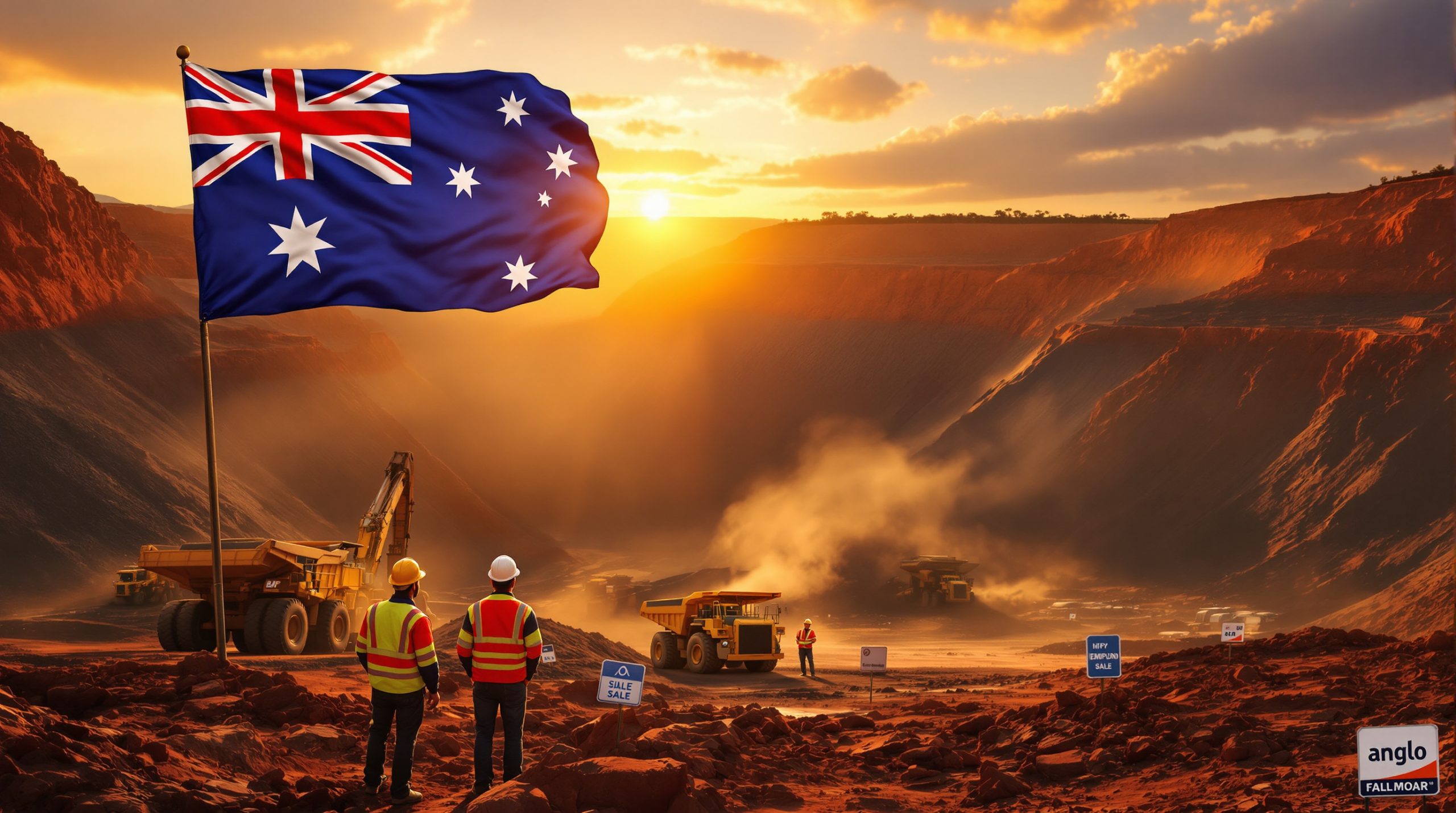What Is Phoenix Tailings and Why Are Major Investors Taking Notice?
Phoenix Tailings has emerged as a key innovator in the U.S. rare earth processing landscape, attracting significant international investment for its revolutionary approach to critical mineral extraction. With groundbreaking technology that promises to reshape domestic supply chains, the company stands at the forefront of America's push to reduce dependence on foreign rare earth sources.
The Strategic Investment from Global Players
Phoenix Tailings recently secured a substantial $33 million investment from an impressive roster of global players, including Sumitomo's Presidio venture arm, Builders Vision, Yamaha Motor, and venture capital funds Envisioning Partners, MPower, and Escape Velocity. This latest funding, finalized on April 25, 2025, represents the second tranche of their Series B round, bringing total Series B funding to $76 million after an initial $43 million closed in December 2024.
The company previously raised $10 million in Series A funding in August 2021, demonstrating a steady growth trajectory that has attracted increasingly significant investor attention. This international investment coalition signals growing confidence in Phoenix Tailings' technology and highlights the global strategic importance of developing rare earth production capabilities outside China's dominant ecosystem.
"The involvement of Japanese industrial giants like Sumitomo and Yamaha is particularly telling," notes industry analyst James Litinsky. "These companies are deeply embedded in supply chains requiring rare earth elements and are actively seeking to diversify their sourcing away from Chinese dependence."
Phoenix Tailings' Innovative Approach to Rare Earth Processing
What distinguishes Phoenix Tailings from conventional rare earth processors is their groundbreaking technology that eliminates the environmentally problematic solvent extraction processes that have dominated the industry since the 1950s. Their proprietary methods can process both virgin ore and recycled equipment with minimal to zero emissions—a revolutionary advancement in an industry notorious for its environmental footprint.
Traditional rare earth processing typically involves energy-intensive acid leaching and chemical-heavy solvent extraction that produces substantial toxic waste. Phoenix Tailings' approach dramatically reduces these environmental impacts while maintaining high recovery rates and purity levels, potentially transforming how rare earths are processed globally.
This cleaner processing technology addresses two critical barriers to U.S. rare earth production revival: environmental concerns that have historically hindered permitting and development, and cost competitiveness against heavily subsidized Chinese operations. By solving both problems simultaneously, Phoenix Tailings offers a viable pathway to reestablishing domestic rare earth production with sustainable practices aligned with modern mining industry ESG transformation standards.
Why Are Rare Earths Critical to Global Manufacturing?
Understanding the Strategic Importance of Rare Earth Elements
Rare earth elements comprise a group of 17 metals with unique properties that make them irreplaceable components in modern manufacturing and technology. Despite their name, most rare earths are relatively abundant in the Earth's crust, but they rarely occur in concentrated, economically viable deposits.
These elements are crucial for manufacturing high-strength permanent magnets that convert power to motion in countless applications. Neodymium, praseodymium, dysprosium, and terbium are particularly vital for producing neodymium-iron-boron (NdFeB) magnets, which offer the highest strength-to-weight ratio available and are essential components in electric vehicle motors, wind turbine generators, smartphone speakers, and hard disk drives.
The transition to green technology has dramatically accelerated demand for rare earths, with a single electric vehicle requiring approximately 1kg of rare earth elements—nearly ten times the amount used in conventional vehicles. Defense applications further drive demand, with each F-35 fighter jet containing about 427kg of rare earth materials in its various systems and components.
The Global Supply Chain Challenge
China's dominant position in rare earth processing and production represents perhaps the most concentrated control of any critical resource in the modern industrial economy. Chinese companies currently process approximately 85% of the world's rare earths and produce about 92% of rare earth magnets, creating a precarious bottleneck in global supply chain super-cycle.
Recent reductions in Chinese rare earth exports have raised alarm bells across manufacturing sectors worldwide. In late 2023, China announced new export controls on certain rare earth processing technologies, citing national security concerns but effectively tightening its grip on global supplies.
"The vulnerability created by this concentration of supply becomes particularly acute during periods of geopolitical tension," explains Dr. Julie Klinger, author of "Rare Earth Frontiers." "Western nations have suddenly realized their green technology and defense systems depend on a supply chain they don't control."
This recognition has accelerated efforts to develop alternative sources, with investments in global rare earth reserves increasing by 256% between 2020 and 2024. However, processing capacity remains the crucial bottleneck—a gap Phoenix Tailings aims to address with its New Hampshire facility.
How Will Phoenix Tailings' New Hampshire Facility Impact the Market?
Facility Specifications and Production Capacity
Phoenix Tailings has committed $13 million to construct its pioneering rare earth processing facility in Exeter, New Hampshire. The plant is designed with an initial production capacity of 200 metric tons of rare earth materials annually—a modest but strategically significant volume that represents approximately 2% of current U.S. consumption.
The facility will focus initially on producing separated rare earth oxides and metals required for high-performance magnets, particularly neodymium, praseodymium, and dysprosium. Construction is currently underway, with operations scheduled to begin in late 2025, creating an estimated 45 direct high-skilled jobs in the process.
While 200 metric tons may seem limited compared to global demand of approximately 170,000 tons annually, industry experts view the facility as a crucial proof-of-concept that could lead to rapid scaling. The modular design deliberately allows for capacity expansion based on initial operational success and market conditions.
Economic and Strategic Implications
The economic implications of Phoenix Tailings' New Hampshire facility extend far beyond direct job creation. By establishing domestic rare earth processing capabilities, the facility helps address critical mineral shortages in U.S. manufacturing supply chains that has grown increasingly concerning to policymakers and industry leaders alike.
The facility could serve as a catalyst for reshoring downstream manufacturing operations that rely on rare earth inputs. Companies producing electric motors, generators, and electronic components might reconsider U.S. manufacturing locations when a reliable, domestic rare earth supply becomes available, potentially creating thousands of indirect jobs.
From a national security perspective, the facility contributes to reducing dependency on foreign rare earth supplies for defense applications. The Department of Defense has identified rare earth elements as materials of strategic importance, and domestic processing capability aligns with broader initiatives to secure critical mineral supply chains.
"What Phoenix Tailings is doing represents more than just a business opportunity—it's addressing a strategic vulnerability in our industrial base," notes former Pentagon advisor Ellen Lord. "The ability to process rare earths domestically creates resilience against supply disruptions that could otherwise cripple high-tech manufacturing."
Beyond economic and security benefits, the facility establishes a model for environmentally responsible critical mineral processing that could influence industry standards worldwide. By demonstrating that rare earth processing can be conducted with minimal environmental impact, Phoenix Tailings challenges the notion that environmental harm is an inevitable cost of obtaining these materials.
What Makes Phoenix Tailings' Technology Different from Traditional Methods?
Technological Innovations in Rare Earth Processing
Phoenix Tailings' revolutionary approach to rare earth processing represents a fundamental departure from conventional solvent extraction techniques that have dominated the industry for decades. The company has developed a proprietary hydrometallurgical process that eliminates many of the harmful chemicals typically associated with rare earth separation.
Traditional processing methods rely heavily on aggressive acids, organic solvents, and hundreds of mixer-settler tanks where separation occurs over multiple iterations. This conventional approach requires massive facilities with extensive chemical handling systems and waste management infrastructure, resulting in high capital costs and significant environmental liabilities.
In contrast, Phoenix Tailings employs an innovative process using proprietary solvents and extraction methodologies that achieve separation more efficiently while dramatically reducing chemical usage. Their system requires approximately 65% less equipment than conventional facilities of comparable capacity, resulting in a smaller physical footprint and lower construction costs.
The technology also boasts impressive versatility, capable of processing both primary rare earth ores and secondary (recycled) materials—a flexibility that traditional processes often lack. This dual-capability positions Phoenix Tailings to tap into the growing market for rare earth recycling from end-of-life products like EV motors and wind turbines, potentially creating a circular supply chain for these critical elements.
Environmental and Sustainability Advantages
The environmental benefits of Phoenix Tailings' approach represent perhaps its most revolutionary aspect. Traditional rare earth processing is notoriously polluting, generating approximately 2,000 tons of toxic and radioactive waste for every ton of rare earth oxides produced—a ratio that has contributed to the industry's concentration in regions with less stringent environmental regulations.
Phoenix Tailings' near-zero emissions processing technology dramatically reduces this environmental burden. The company claims their process generates over 90% less waste than conventional methods, eliminates toxic air emissions, and requires 60% less energy input. Water consumption—a major concern in conventional processing—is reduced by approximately 80% through advanced recycling systems within the process.
These environmental advantages translate directly to economic benefits. Lower waste generation means reduced disposal costs and less regulatory complexity. Smaller environmental footprints facilitate permitting processes that have historically bottlenecked U.S. rare earth projects. Energy efficiency improves operating economics in competitive markets.
The technology also aligns perfectly with ESG (Environmental, Social, Governance) investment criteria that have become increasingly important to institutional investors and corporate partners. This alignment likely contributed to Phoenix Tailings' success in attracting investment from sustainability-focused funds like Builders Vision, which explicitly prioritizes environmental performance in its portfolio companies.
"What makes Phoenix Tailings particularly interesting is their rejection of the false choice between environmental responsibility and economic viability," explains sustainable mining consultant Dr. Karen Hanghøj. "They've developed a process that's both cleaner and potentially more cost-effective at scale."
How Does This Development Fit into the Global Race for Critical Minerals?
The Geopolitical Context of Rare Earth Production
Phoenix Tailings' emergence comes amid intensifying geopolitical competition over critical mineral supply chains, with rare earth elements at the epicenter of this contest. The company's development represents a significant piece in the broader Western strategy to reduce China's dominance over these essential resources.
The U.S. government has identified rare earth dependency as a strategic vulnerability, implementing multiple initiatives to support domestic production. The Inflation Reduction Act allocated $500 million specifically for critical minerals projects, while the Department of Defense has invested directly in rare earth separation facilities through its Defense Production Act authorities.
Similar efforts are underway internationally. The European Union launched the European Raw Materials Alliance in 2020 with rare earths as a priority focus. Japan's economic security legislation specifically targets rare earth supply chains for government support. Australia has designated critical minerals as a national priority sector with dedicated funding and regulatory support.
These government initiatives reflect growing concern that China could weaponize its rare earth dominance during periods of geopolitical tension—a scenario that briefly materialized in 2010 when China restricted rare earth exports during a diplomatic dispute with Japan. Phoenix Tailings represents the kind of private-sector response these government programs aim to catalyze.
Market Implications and Future Outlook
The market implications of Phoenix Tailings' technology extend beyond its immediate production capacity. By demonstrating that environmentally responsible rare earth processing is technically and economically viable outside China, the company could accelerate similar developments worldwide, potentially shifting market dynamics over the coming decade.
Industry analysts project that non-Chinese rare earth processing capacity could grow from approximately 15% of global production today to as much as 35% by 2030 if projects like Phoenix Tailings prove successful. This diversification would likely reduce price volatility and supply risks that currently characterize rare earth markets.
For downstream manufacturers, the emergence of reliable Western rare earth sources reduces pressure to relocate production to China to secure supplies. This factor could influence reshoring decisions for industries like electric vehicle manufacturing, electronics, and renewable energy equipment production, with significant implications for Western industrial competitiveness.
Investment patterns already reflect this shifting landscape. Venture capital funding for critical mineral startups increased by 320% between 2020 and 2024, with rare earth projects capturing the largest share. Corporate strategic investment has similarly accelerated, as evidenced by Phoenix Tailings' investor roster including industrial players Sumitomo and Builders Vision back US rare earths startup Phoenix Tailings.
"We're witnessing the early stages of a fundamental restructuring of global rare earth supply chains," notes commodity strategist Simon Moores. "Companies like Phoenix Tailings represent the technological innovation necessary to make this restructuring economically viable rather than merely politically expedient."
The company's future growth trajectory will likely depend on successfully scaling its technology while navigating volatile market conditions. Chinese producers may respond to Western competition with strategic price reductions or capacity expansions—tactics previously employed to maintain market dominance—creating challenging competitive dynamics even for technologically superior approaches.
What Other US-Based Rare Earth Initiatives Are Emerging?
Competitive Landscape in North American Rare Earth Processing
Phoenix Tailings enters a rapidly evolving North American rare earth landscape with several significant competitors pursuing different technological and strategic approaches. Understanding this competitive context helps assess the company's potential impact and market positioning.
MP Materials, which operates the Mountain Pass mine in California, represents the largest U.S. rare earth producer by volume. The company currently mines rare earth concentrate but ships it to China for processing—a vulnerability it aims to address with a $700 million investment in domestic separation facilities. Unlike Phoenix Tailings, MP Materials focuses primarily on processing virgin ore from its own mining operations rather than recycled materials.
Lynas Rare Earths, an Australian company, is developing a separation facility in Texas with $120 million in U.S. Department of Defense support. The facility will process material from Lynas's Australian mines, creating a supply chain independent from China but still reliant on imported feedstock. Lynas employs more conventional processing technology than Phoenix Tailings, though with enhanced environmental controls.
USA Rare Earth plans to develop an integrated mine and processing facility in Texas, pursuing vertical integration from mining through magnet manufacturing. Their approach combines conventional processing methods with proprietary technologies for specific separation steps, positioning between traditional processes and Phoenix Tailings' more revolutionary approach.
Smaller players include Ucore Rare Metals, developing a processing facility in Alaska using its proprietary RapidSX technology, and Rare Element Resources, which received Department of Energy funding for a Wyoming demonstration plant. Each employs different technological approaches to address the environmental and economic challenges of rare earth processing.
Integration with Mining and End-User Industries
Phoenix Tailings' strategy involves developing partnerships across the supply chain rather than pursuing complete vertical integration. The company has announced memoranda of understanding with several mining operations to secure ore feedstock while simultaneously developing relationships with electronics recyclers to source end-of-life products containing rare earths.
On the customer side, Phoenix Tailings has engaged with magnet manufacturers and OEMs in the automotive and electronics sectors, though specific partnership details remain confidential. These relationships could evolve into off-take agreements that would provide revenue certainty for facility expansion.
The company's dual-feedstock strategy—processing both virgin ore and recycled materials—creates unique integration opportunities. As the circular economy for rare earths develops, Phoenix Tailings could establish closed-loop systems with manufacturers, recapturing rare earths from their products at end-of-life and returning them as new inputs, creating a sustainable materials cycle that aligns with broader decarbonisation in mining efforts.
This approach differs from competitors like MP Materials and USA Rare Earth, which focus more heavily on vertical integration from mining through separation. Phoenix Tailings' processing-centered strategy may offer greater flexibility in sourcing and customer relationships, though it lacks the supply security of captive mining operations.
"The rare earth industry is rediscovering the benefits of specialization and partnership after a period where everyone wanted to be vertically integrated," explains industry consultant Gareth Hatch. "Phoenix Tailings' focus on solving the processing bottleneck rather than trying to control the entire supply chain reflects a mature strategic approach."
FAQs About Phoenix Tailings and Rare Earth Processing
What are rare earth elements and why are they important?
Rare earth elements comprise a group of 17 chemically similar metals in the periodic table, including the 15 lanthanides plus scandium and yttrium. Despite their name, most rare earths are relatively abundant in the Earth's crust, but they rarely occur in concentrated, economically viable deposits.
These elements possess unique magnetic, luminescent, and electrochemical properties that make them irreplaceable in many high-technology applications. Neodymium and praseodymium create the world's strongest permanent magnets, essential for electric vehicle motors and wind turbine generators. Europium and terbium provide the red and green colors in digital displays. Lanthanum enhances the performance of catalytic converters.
The strategic importance of rare earths extends beyond commercial applications to defense systems, where they enable precision-guided munitions, radar systems, and electronic warfare capabilities. The F-35 fighter jet alone contains approximately 427kg of rare earth materials across its various systems.
Demand for rare earths has grown dramatically with the transition to green energy and advanced electronics, with market volume increasing approximately 8% annually since 2015. This growth trajectory is expected to accelerate as electric vehicle adoption and renewable energy deployment continue expanding globally.
How does Phoenix Tailings' process differ from traditional rare earth processing?
Traditional rare earth processing typically involves crushing and grinding ore, followed by flotation to create a
Ready to Capitalise on the Next Mineral Discovery?
Discover how you can gain a competitive edge in rare earth and critical minerals investing with real-time alerts on significant ASX announcements, powered by Discovery Alert's proprietary Discovery IQ model. Visit our discoveries page to see how historical mineral discoveries have generated substantial returns for early investors.




